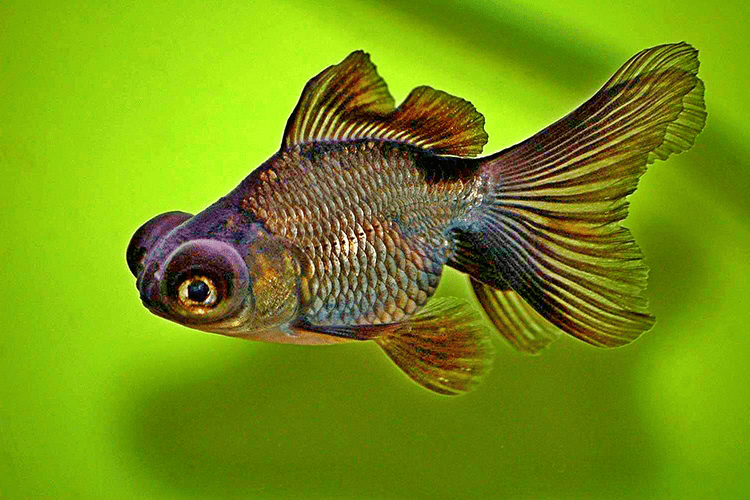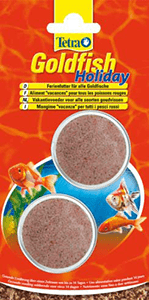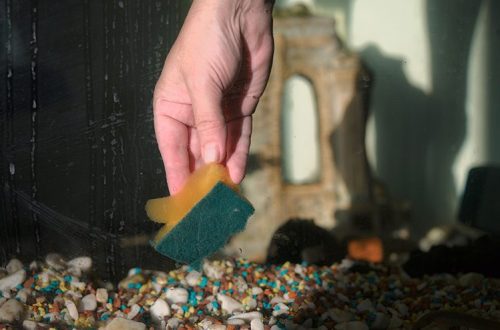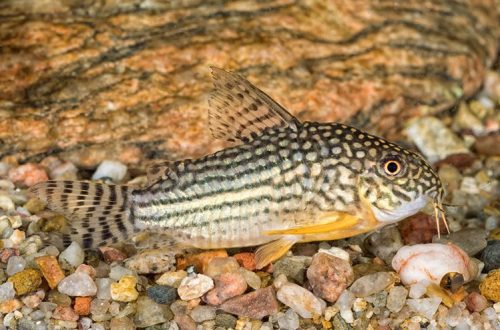
What to feed goldfish
Goldfish are one of the most popular pets among aquarium connoisseurs. And no wonder, they are very beautiful, unpretentious, friendly. In addition, there are several varieties of goldfish, each of which is characterized by its unique color and shape.
It is interesting that the distant, mysterious China is the birthplace of goldfish, and the first representatives of the species appeared as much as 1500 years ago. Initially, these outlandish pets were found only in the luxurious homes of the wealthiest people, as well as in temples, but over time, their breeding became more accessible, and goldfish spread among the ordinary population of China and further: through the countries of the East and around the world.
In China, goldfish, which have such an ancient history, are still considered a symbol of prosperity and joy today. But in order for a colorful pet to please the eye and bring happiness for a long time, it needs to be well and responsibly looked after, because even the smallest and most fragile fish needs care and special care.
Of course, the foundation of good health, well-being and a long life is a correct, balanced diet, made specifically for goldfish and fully taking into account the needs of these pets.
Among the huge range of aquarium fish food offered in pet stores, it can be difficult to make the right choice. The main attention should be paid to the reputation of the manufacturer, the purpose and composition of the feed line, the expiration date and, of course, the integrity of the packaging.
When choosing food for goldfish, you should not buy a diet for catfish, bettas, guppies or other aquatic inhabitants that you liked because of the beautiful packaging. After all, despite the fact that they are all inhabitants of the aquarium, each species has its own characteristics of keeping and feeding, and it is very important to take them into account so that the pets live happily ever after.
High-quality balanced food for goldfish serves as a reliable basis for their good life, proper growth and development. Despite the fact that many aquarium inhabitants are unpretentious in nutrition and can easily dine with dishes that are unusual for them, such as bird meat or cereals, you should not experiment with food, because it is dangerous not only for health, but also for the life of pets.
The best, healthiest, and most convenient solution is complete, ready-to-eat foods designed specifically for your aquarium fish species. All the ingredients and nutrients in such feeds are carefully balanced taking into account the daily needs of the pet, and it is almost impossible to achieve such a balance on your own.
Diets from trusted manufacturers carefully combine vitamins, immune stimulants and energy sources, which have a beneficial effect on various body functions and ensure a healthy and long life for pets. Some food lines also contain a special formula to improve the digestibility of the food and, as a result, reduce the waste produced by the body, so that the water in the aquarium remains clean and clear for even longer.
The best choice for goldfish, for example, is quality flake food. As a rule, it contains several useful ingredients – sources of nutrients, minerals and vitamins that fish need for full development. In the process of feeding, the flakes slowly sink into the water column – and the fish quickly catch them. An alternative to this method of feeding is diets in the form of floating sticks and granules (or grains): they do not sink to the bottom of the aquarium, but stay on the surface of the water.
Are very popular food made from a mixture of chips, also endowed with nutrients and, due to the production at low temperatures, have a high nutritional value.
However, the best choice for goldfish, according to many, are diets in the form of soft and light granules with a high vitamin content, good digestibility and spirulina algae and carotenoids to enhance natural coloration.
Easy to use and series that combine several types of feed in one package, for example, flakes, chips, granules and daphnia. Since in nature the food of fish is very diverse, then at home keeping a pet should not be fed with only one type of food, it is harmful to his health.
Special attention deserves the feeding of breeding goldfish, such as telescopes, orandas, lionheads, veiltails, etc. Taking into account the individual characteristics of these varieties, food lines with a high content of herbal ingredients and sprouted wheat have been developed, which are a reliable prevention of diseases associated with metabolic disorders, which Unfortunately, these varieties of goldfish are susceptible.
For breeding goldfish, there are also separate feeds that are balanced in composition and serve as a preventive measure for certain features of fish. For example, Japanese goldfish are accustomed to looking for food at the bottom, and not grabbing it from the surface of the water. If these fish are fed flakes or non-sinking sticks, they can swallow too much air and float to the surface. You might even think that the fish is dead, but it is not: it only swims with its belly up. After a few hours, this state passes, and the fish is freed from excess air. To prevent Japanese goldfish from floating to the surface, you need to feed them special anti-roll food. Usually these are granules that quickly sink to the bottom and do not float to the surface.

The advantage of complete food for aquarium fish is not only in their benefits, but also in convenience. For example, ready-made diets allow the owner of the aquarium not to worry about his pets during a vacation or trip.
For such cases, there are special series of feed marked Holliday or Weekend, which are produced in the form of large layers (blocks).
 It is enough to attach the compressed food blocks to the glass of the aquarium or put it on the bottom. After that, the compressed food is slowly, over several days, broken down by the action of water so that the fish can eat in a mode that is comfortable for them.
It is enough to attach the compressed food blocks to the glass of the aquarium or put it on the bottom. After that, the compressed food is slowly, over several days, broken down by the action of water so that the fish can eat in a mode that is comfortable for them.
This method of feeding does not pollute the water, unlike when the owner gives the fish much more live or prepared food before the trip, thus trying to create a reserve “for the future”. This is a big mistake common to inexperienced aquarists. Firstly, at one meal, the fish will eat much more food than their body needs, and overeating can cause serious illness and even death. Secondly, the leftover food will simply sink to the bottom and spoil, polluting the water in the aquarium and threatening the well-being of its inhabitants. Fortunately, the special lines of the aforementioned feeds make it easy to solve this problem.
Since the issue of feeding was and remains the most important, trial and error in this area is not encouraged. Choose quality foods that are right for your pets and always follow the feeding recommendations. Love and take care of your pets, because this is the only way your goldfish will be healthy, beautiful and happy, and as a thank you, who knows, maybe even fulfill your desires 🙂





